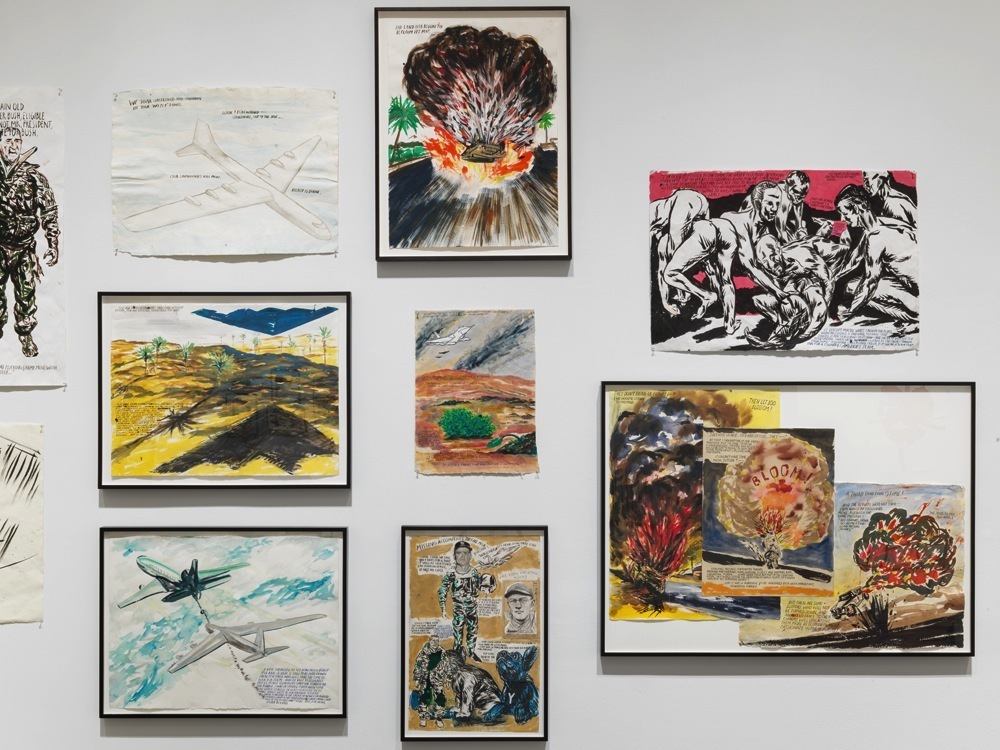“It will take hours to read every word in this exhibition,” said Lisa Phillips, the Toby Devan Lewis Director of New York City’s New Museum, during the opening remarks at a preview of Raymond Pettibon’s new show yesterday morning. It was just one attempt to convey the exhibition’s immense scale. Titled Raymond Pettibon: A Pen of Work, the show features a staggering 914 objects created over the iconoclastic American artist’s 40-year career. Phillips credited co-curator Massimiliano Gioni and his team for the Herculean effort of analyzing 20,000 of Pettibon’s zines, videos, gig flyers, record sleeves, large-scale ink illustrations, posters, drawings, films, and collaborative collaged works. Gioni later clarified: “full disclosure, we only looked at 5,000 of the works to make our selection.” Only.
A Pen of Work is Pettibon’s first major museum show in New York City, and arguably his most ambitious ever. It collects some of his earliest childhood drawings — which have since been amended with the artist’s signature snippets of appropriated, anxiety-laden prose — as well as the punk posters he produced for his brother’s label, SST Records, an anchor of the Southern California hardcore scene throughout the 1980s. (The New Museum’s ground floor elevator panels are painted with four black blocks, perhaps a cheeky homage to Pettibon’s most enduring symbol: the Black Flag logo.)
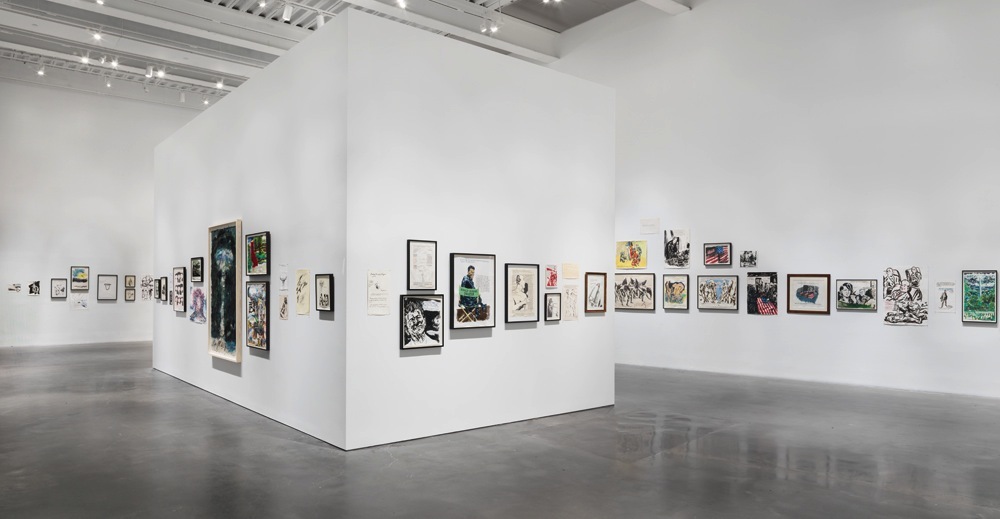
The show also incorporates much of Pettibon’s more recent work; an entire floor of the seven-story museum is dedicated to his incendiary political pieces. Ronald and Nancy Reagan have their own wall; George Bush shares one with Osama bin Laden, Condoleezza Rice, Abu Ghraib, and the Twin Towers. The surfers that Pettibon has been illustrating with ink since 1985, and dedicated a recent gallery show to, have their own sublime, serene room directly underneath this neo-conservative hall of shame.
From Golden Age comic books to Gumby, Charles Manson to Jesus Christ, naked New York Yankees players to Los Angeles punks, Pettibon’s work absorbs wide-ranging aspects of American history, social and visual culture. The artist reassembles these icons, themes, and symbols through an explosion of image and text — forming energetic, razor-sharp critiques of our divided nation’s difficult cultural legacy. A Pen of Work isn’t simply unmissable, it must be seen to be believed. Here, we dissect five of the obsessions that shape it.
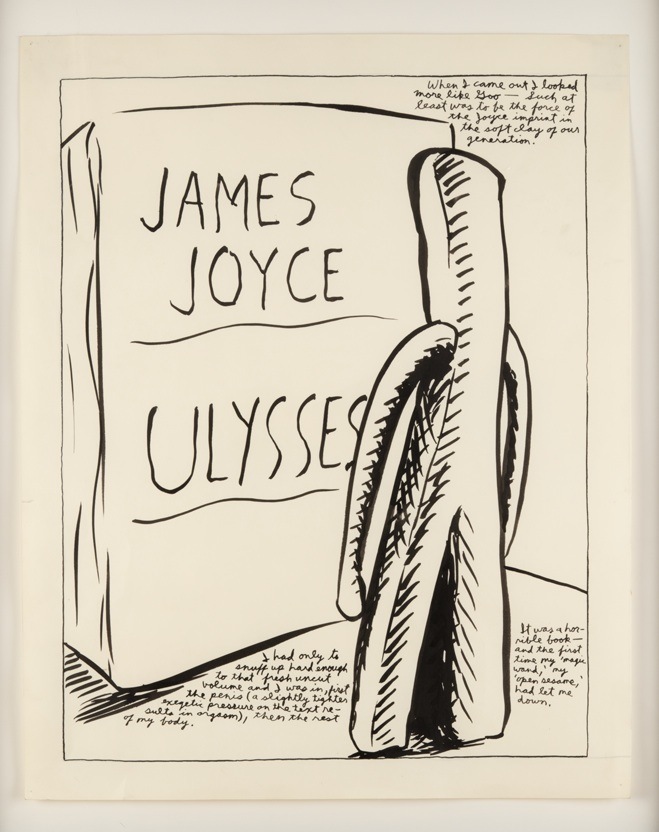
Literature: Despite its menagerie of motifs, A Pen of Work is definitively guided by Pettibon’s literary interests. “We want to present him as someone who has an analytical understanding, complex, accurate and deliberate, of his sources,” Gioni told The New York Times recently. For as much as Pettibon collides images, he also collages texts — lifted from the likes of James Joyce, 50s crime novelist Mickey Spillane, Arthur Rimbaud, Henry James, John Ruskin, Allen Ginsberg, the Bible, and various sports writers. The son of an English professor (who occasionally tried his hand at crafting spy stories), Pettibon has collaborated with novelists like Dennis Cooper, and rounds out his reading list with soul-sucking stories by St. John of the Cross. Gioni told the NYT the show should feel like “you’ve been shouted at or spoken to in a multitude of voices for an hour or two.”
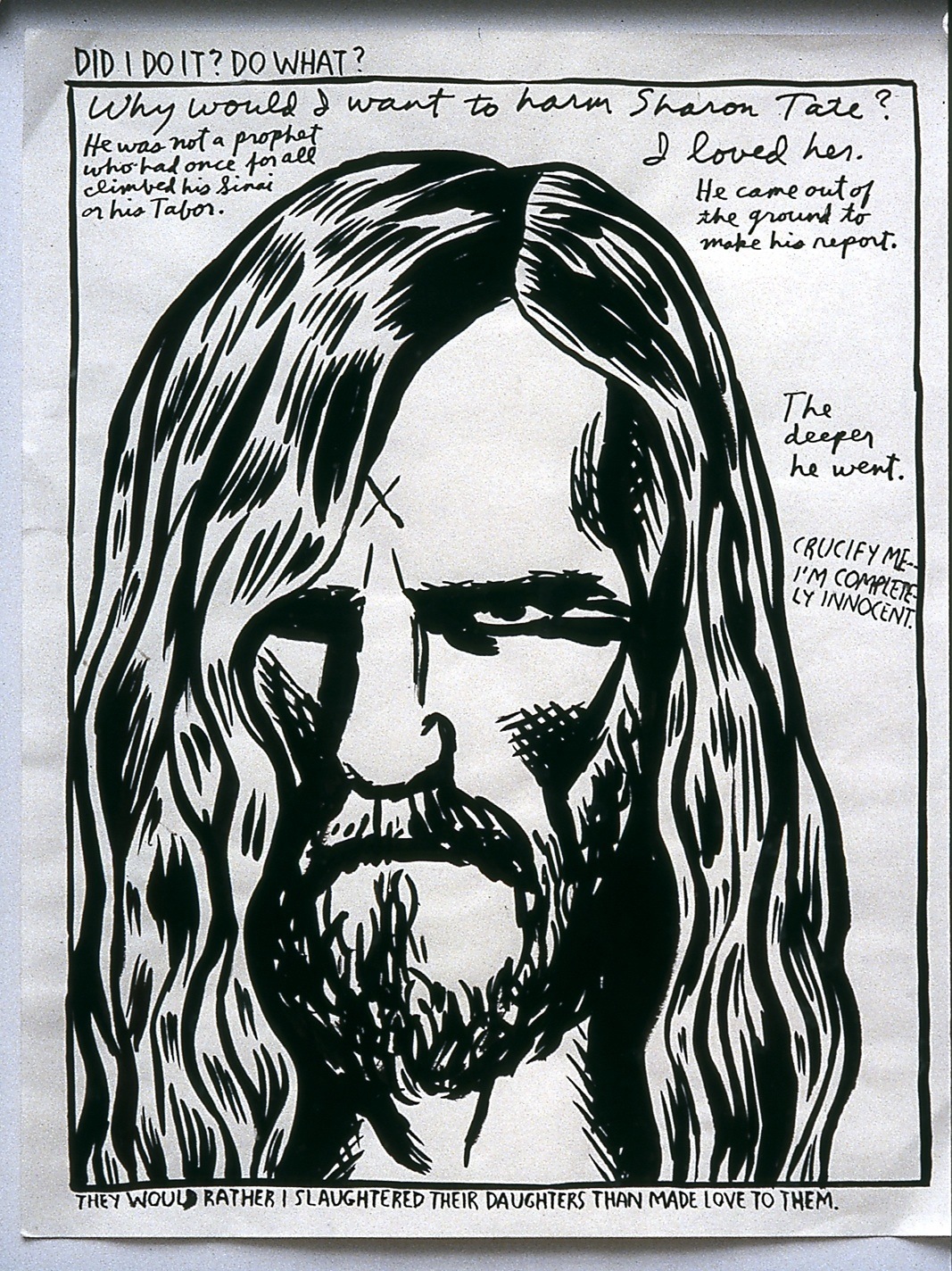
Charles Manson: The sociopathic cult leader brainwashed a cohort of teenage girls to commit grisly murders, with the ultimate aim of inciting an apocalyptic race war. In addition to innocent Californians, Manson and his groupies killed the 60s dream of a hippie utopia, ushering in a decade largely defined by violent crime. The Manson Family has its own wall in Pettibon’s show, immediately identifiable by the requisite X’s that appear on its members’ foreheads. It also includes one of Pettibon’s lo-fi films on the subject, Judgement Day Theater: The Book Of Manson, made with artist and musician friends in 1989, 20 years after the Helter Skelter crimewave rocked Southern California and the country. “It’s very rare that someone gets the death penalty for charges of conspiracy, for his influence, for his Svengali-Rasputin act,” Pettibon told Interview in 2008, “But that’s exactly what both fascinated and horrified the public about Charles Manson back then — that someone like that could put such a spell on their children, on the girl next door. Seeing that made you feel that anything was possible, nothing was safe.” Cold-blooded killers apprehended just a few years prior to the Manson Family’s courtroom circus — Manchester’s Moors Murderers — would later form the basis of Pettibon’s iconic Sonic Youth album cover, Goo.
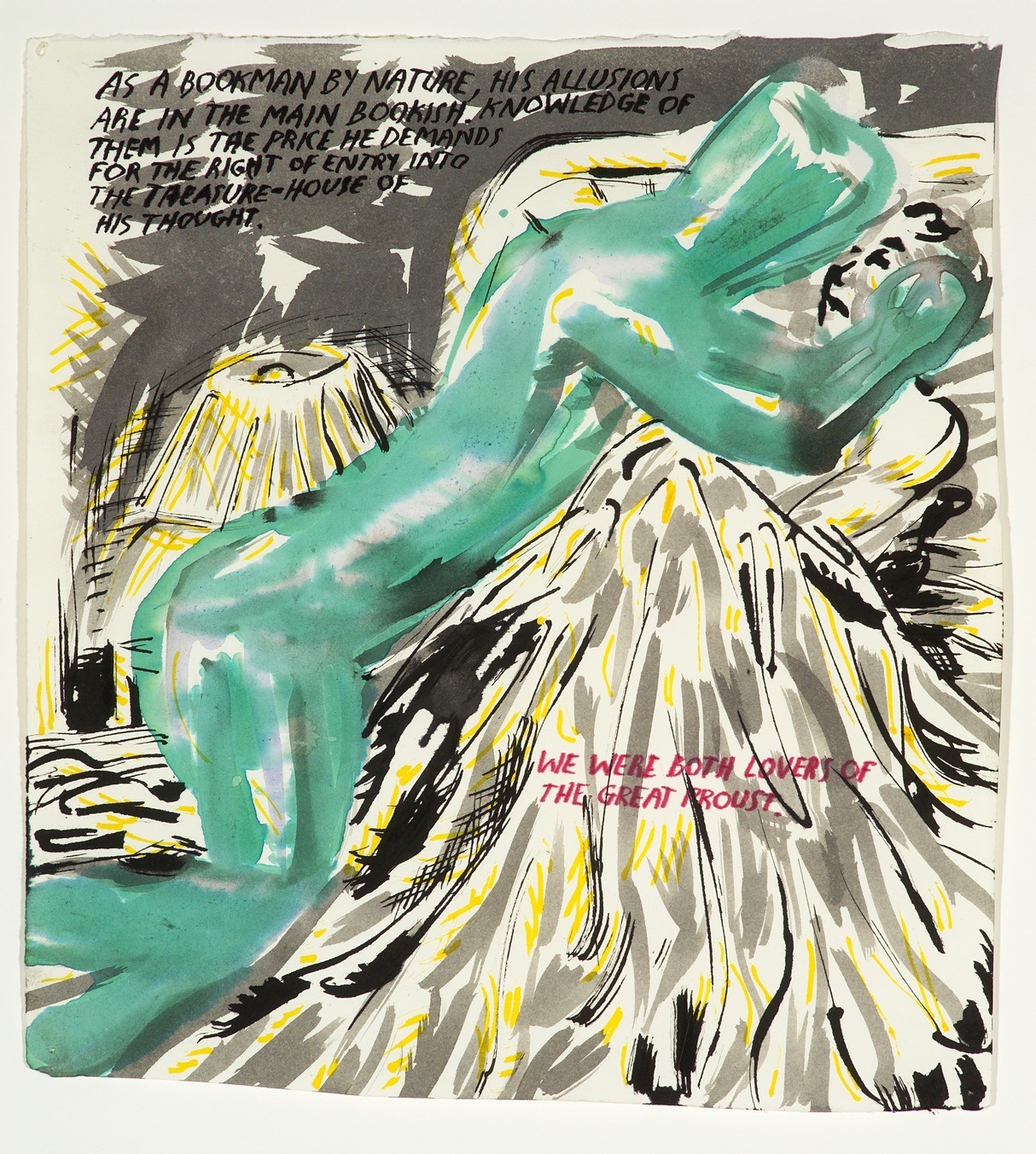
Gumby: “I saw him on TV. The appeal was that he could go into books and become part of the story,” Pettibon told Interview of his introduction to the green blob who appears in many of his works — including recent collaborations with Marcel Dzama. A somewhat disturbingly erotic Gumby gets his own wall in the show, located next to a series of red A’s, recalling Hester Prynne of Nathaniel Hawthorne’s best known novel. Other comic book and cartoon characters that make appearances in the exhibition: Mickey Mouse (who cameos on a Black Flag flyer), Superman, and Vavoom — an early Felix the Cat character Pettibon has used as a mouthpiece for Henry James’s 19th century realism.
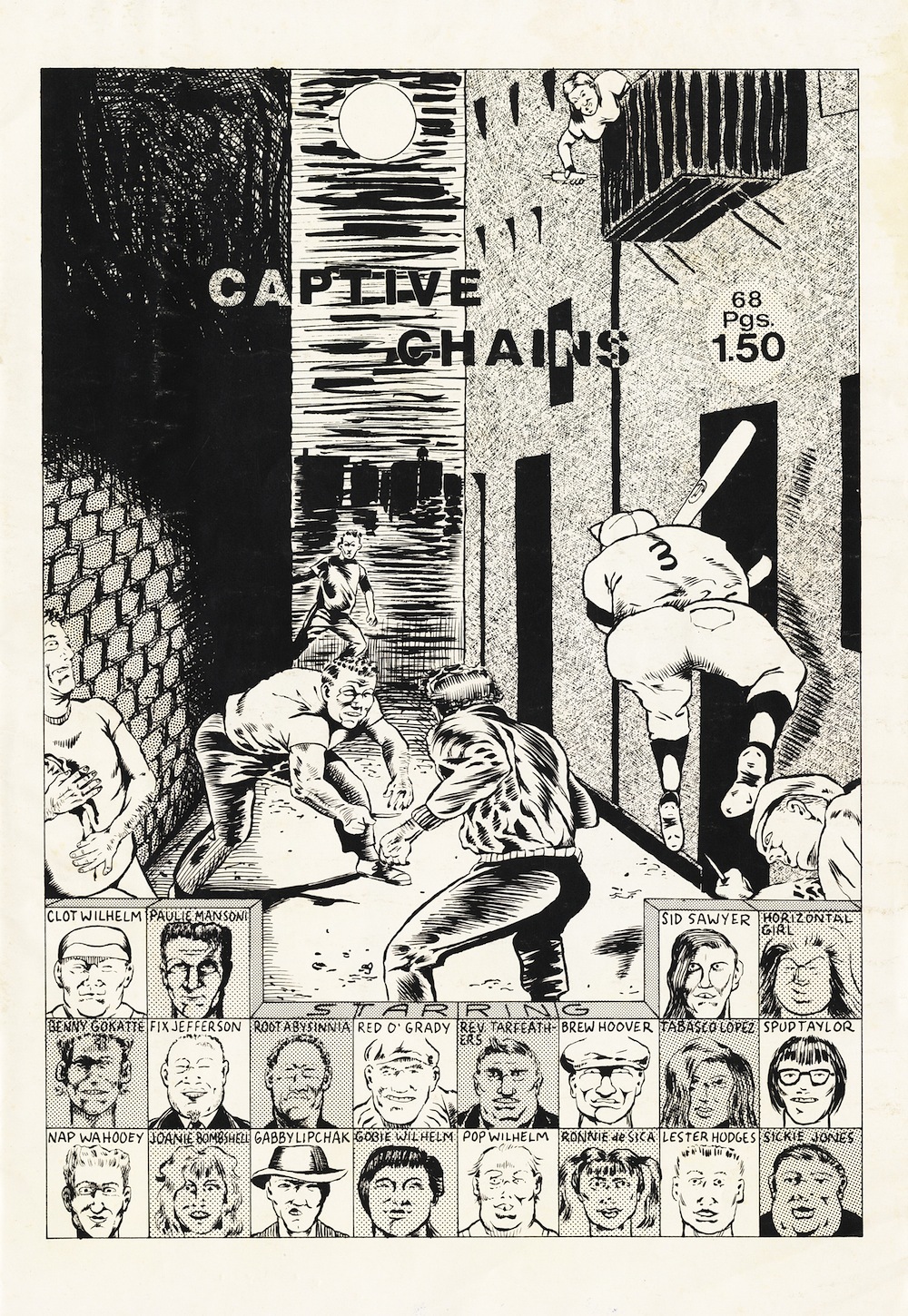
Sports: According to the NYT’s profile, Pettibon has installed a pitching machine in past studio spaces; he’s got a basketball hoop and surfboard in his current one. (He actually invited one of his former film stars, Kim Gordon, to come by and shoot hoops a few years back). Though Pettibon has been tweeting about LeBron James and Carmelo Anthony, A Pen of Work is light on courtside references. In addition to the previously mentioned room of surfers — one of the show’s high points — Pettibon has also dedicated a wall to works featuring baseball players. Some of them are dressed in old-style uniforms à la Babe Ruth or Mickey Mantle; others wear nothing at all.
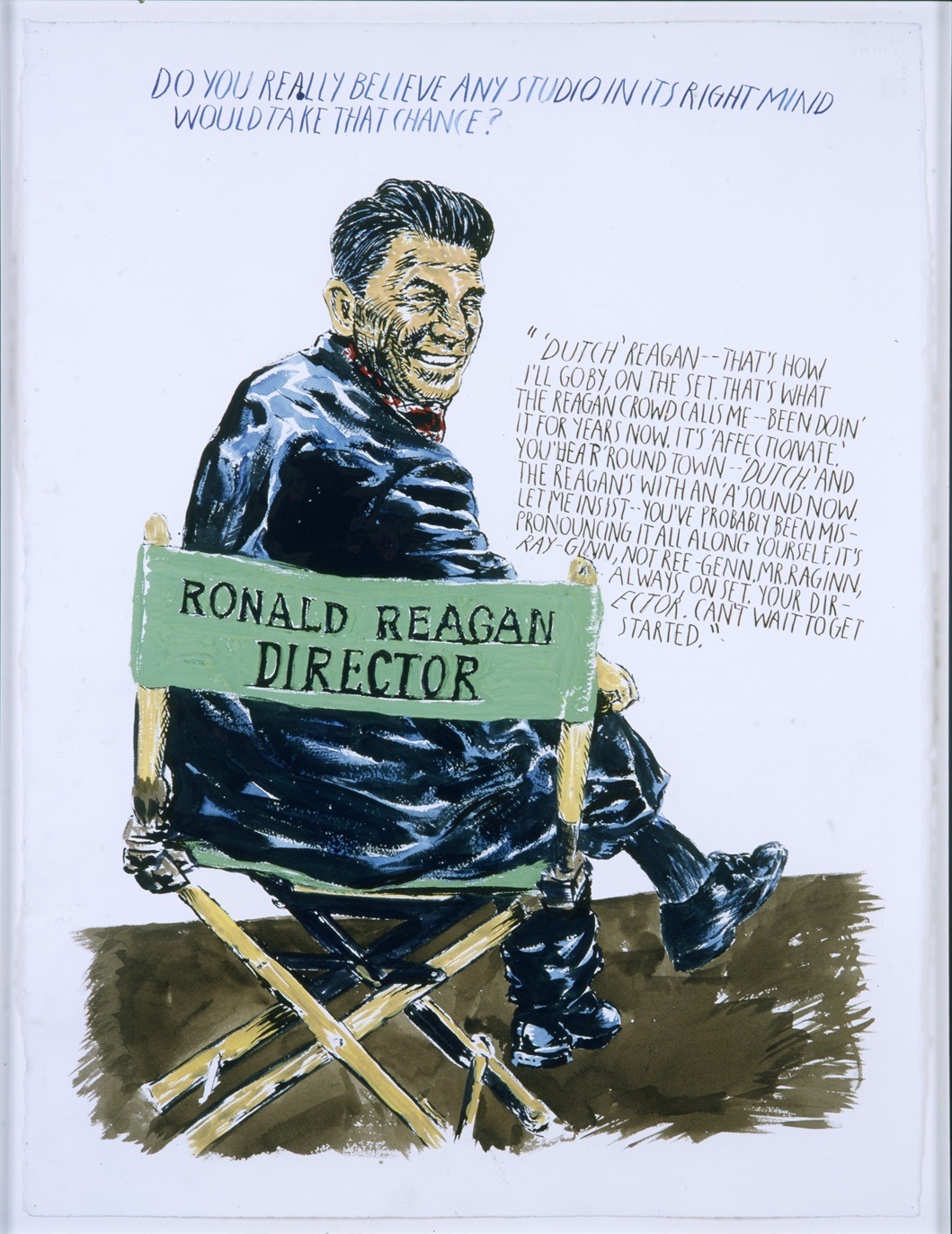
Ronald Reagan: Pettibon’s last name isn’t his real one (rather, it’s adapted from a childhood nickname, “petit bon”). The brother of Black Flag and SST Records founder Greg Ginn, Pettibon’s birth name is strangely close to the US President the hardcore punk movement reacted so strongly against: Ronald Reagan (Ray Ginn, get it?). “Did this cause some attachment to Ronald and Nancy in your often unflattering depictions of them?” Interview wondered of Pettibon’s renderings of the neo-conservative couple throughout the 1980s. Not really. “I was called that sometimes as a kid. But I don’t know that it had any influence on Reagan appearing in my work. He was around, though — he was governor of California before he became president.” Though Bush and Obama have both since been the subjects of Pettibon’s searing critiques, it is perhaps Reagan’s movie star past — addled with the cowboys and cop pictures the artist was raised on — that has made Teflon Ron Pettibon’s prime target.
‘Raymond Pettibon: A Pen of Work’ is on view at the New Museum through April 9, 2017. More information here.

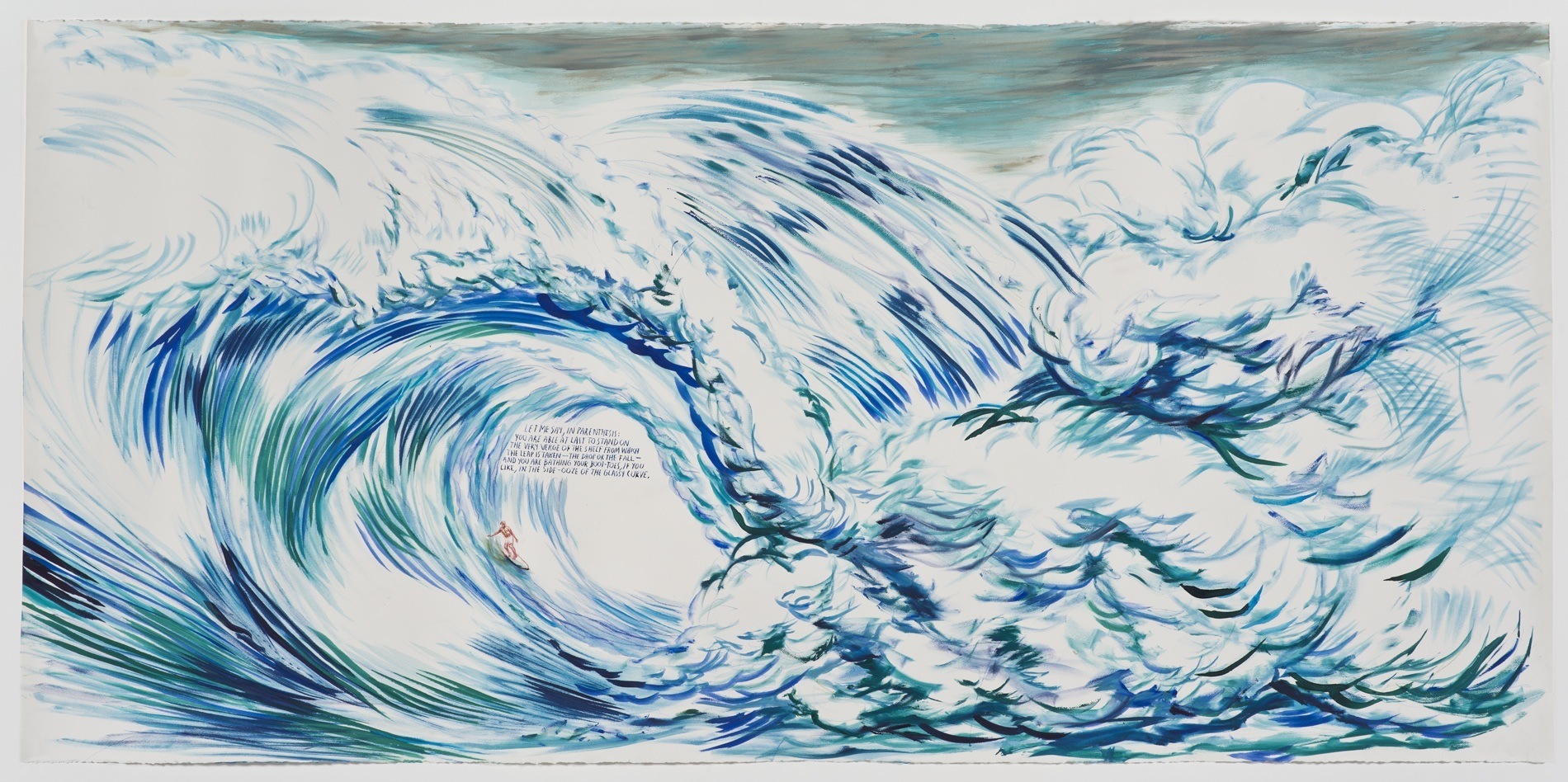
Credits
Text Emily Manning
